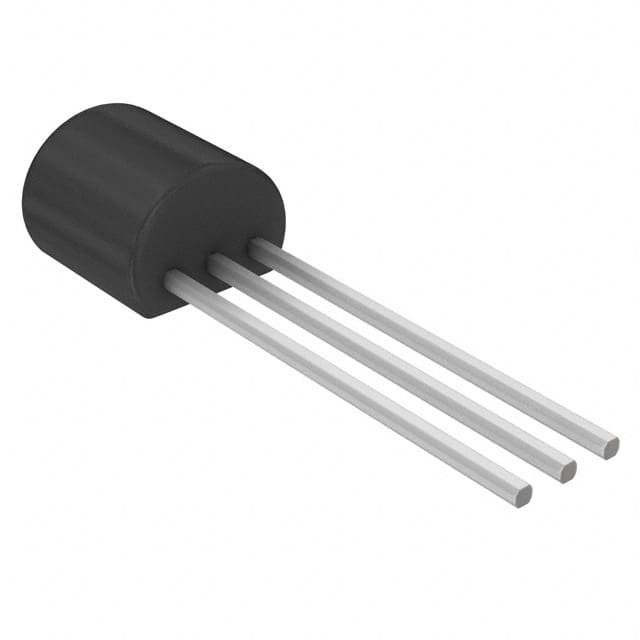BT169B,126
Product Overview
- Category: Semiconductor
- Use: Switching and Amplification
- Characteristics: Low power, high voltage, NPN silicon planar epitaxial transistor
- Package: SOT54 (TO-92)
- Essence: Small signal switching applications
- Packaging/Quantity: Bulk packaging, 1000 units per reel
Specifications
- Voltage - Collector Emitter Breakdown (Max): 400V
- Current - Collector (Ic) (Max): 500mA
- Power - Max: 625mW
- DC Current Gain (hFE) (Min) @ Ic, Vce: 40 @ 100mA, 10V
- Frequency - Transition: 30MHz
Detailed Pin Configuration
- Base (B)
- Emitter (E)
- Collector (C)
Functional Features
- Fast switching speed
- Low collector-emitter saturation voltage
- High current gain
Advantages
- Suitable for low power applications
- Compact package size
- Versatile in small signal switching applications
Disadvantages
- Limited power handling capability
- Not suitable for high current or high power applications
Working Principles
The BT169B,126 is a low power NPN silicon planar epitaxial transistor designed for use in small signal switching applications. It operates by controlling the flow of current between the collector and emitter terminals based on the voltage applied to the base terminal.
Detailed Application Field Plans
- Automotive Electronics: Used in automotive control systems for small signal switching.
- Consumer Electronics: Employed in various consumer electronic devices for low power switching functions.
- Industrial Automation: Utilized in industrial automation equipment for small signal amplification and switching.
Detailed and Complete Alternative Models
- BC547
- 2N2222
- 2N3904
- 2N4401
This comprehensive entry provides an in-depth understanding of the BT169B,126 semiconductor, covering its basic information, specifications, pin configuration, functional features, advantages and disadvantages, working principles, application field plans, and alternative models.
10个与BT169B,126在技术解决方案中的应用相关的常见问题及解答
What is the BT169B,126?
- The BT169B,126 is a sensitive gate silicon controlled rectifier (SCR) designed for use in general-purpose switching and phase control applications.
What is the maximum voltage and current rating of the BT169B,126?
- The maximum voltage rating is typically 400V, and the maximum current rating is typically 0.8A.
What are the typical applications of the BT169B,126?
- The BT169B,126 is commonly used in light dimming circuits, motor speed control, and general AC switching applications.
How do I trigger the BT169B,126 into conduction?
- The BT169B,126 can be triggered into conduction by applying a positive pulse to its gate terminal with respect to the cathode.
What are the key features of the BT169B,126?
- Some key features include low gate current, sensitive gate triggering, and high surge current capability.
Can the BT169B,126 be used for AC or DC applications?
- The BT169B,126 is suitable for AC applications due to its bidirectional conducting nature.
What precautions should be taken when handling the BT169B,126?
- It is important to avoid applying excessive voltage or current to the device, and to handle it with proper ESD protection to prevent damage.
What is the typical on-state voltage drop of the BT169B,126?
- The typical on-state voltage drop is relatively low, typically around 1.7V at the rated current.
Can the BT169B,126 be used for high-frequency applications?
- The BT169B,126 is not typically recommended for high-frequency applications due to its inherent turn-off time characteristics.
Are there any alternative devices that can be used in place of the BT169B,126?
- Yes, there are other SCRs and solid-state relays available that may be suitable depending on the specific application requirements.


